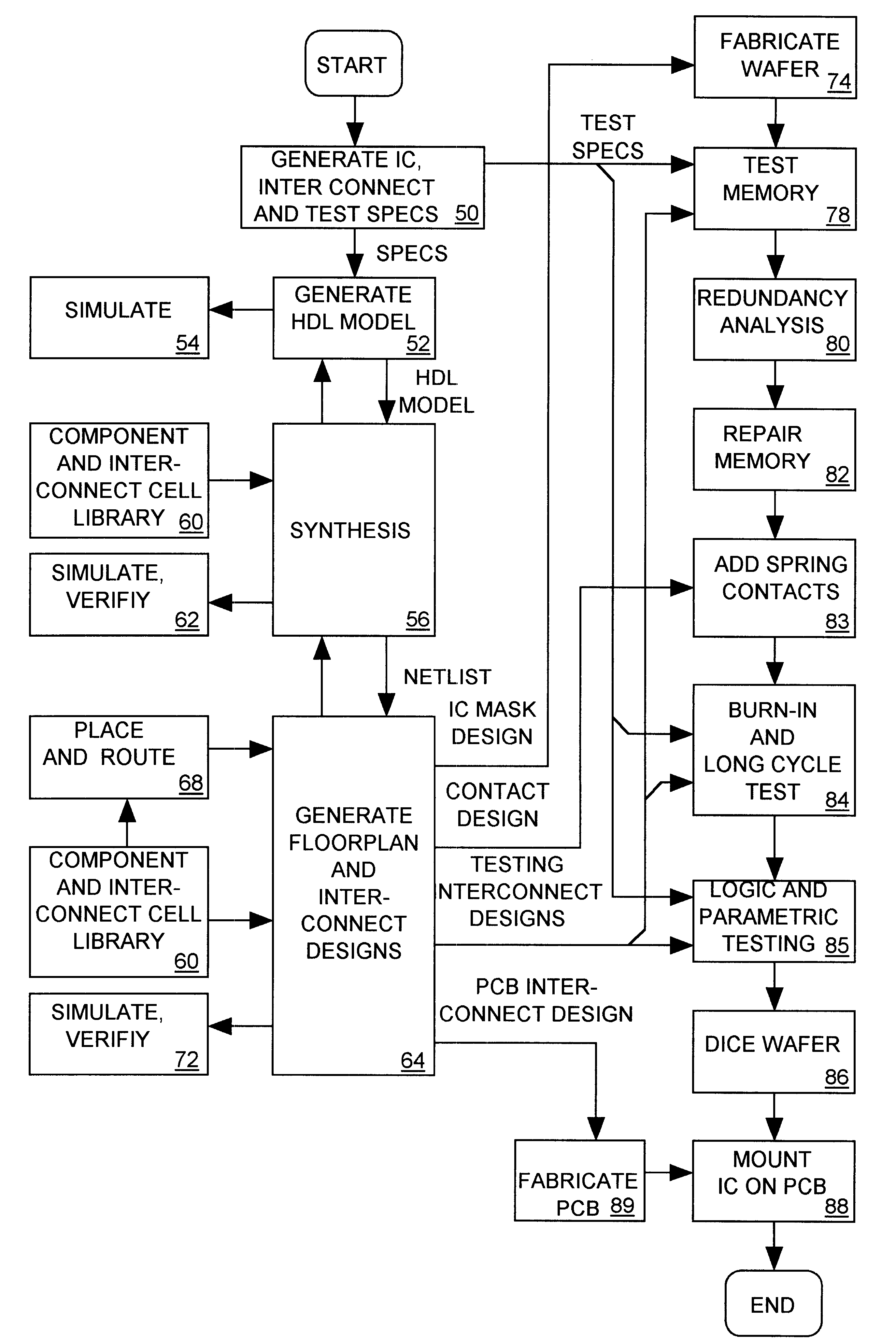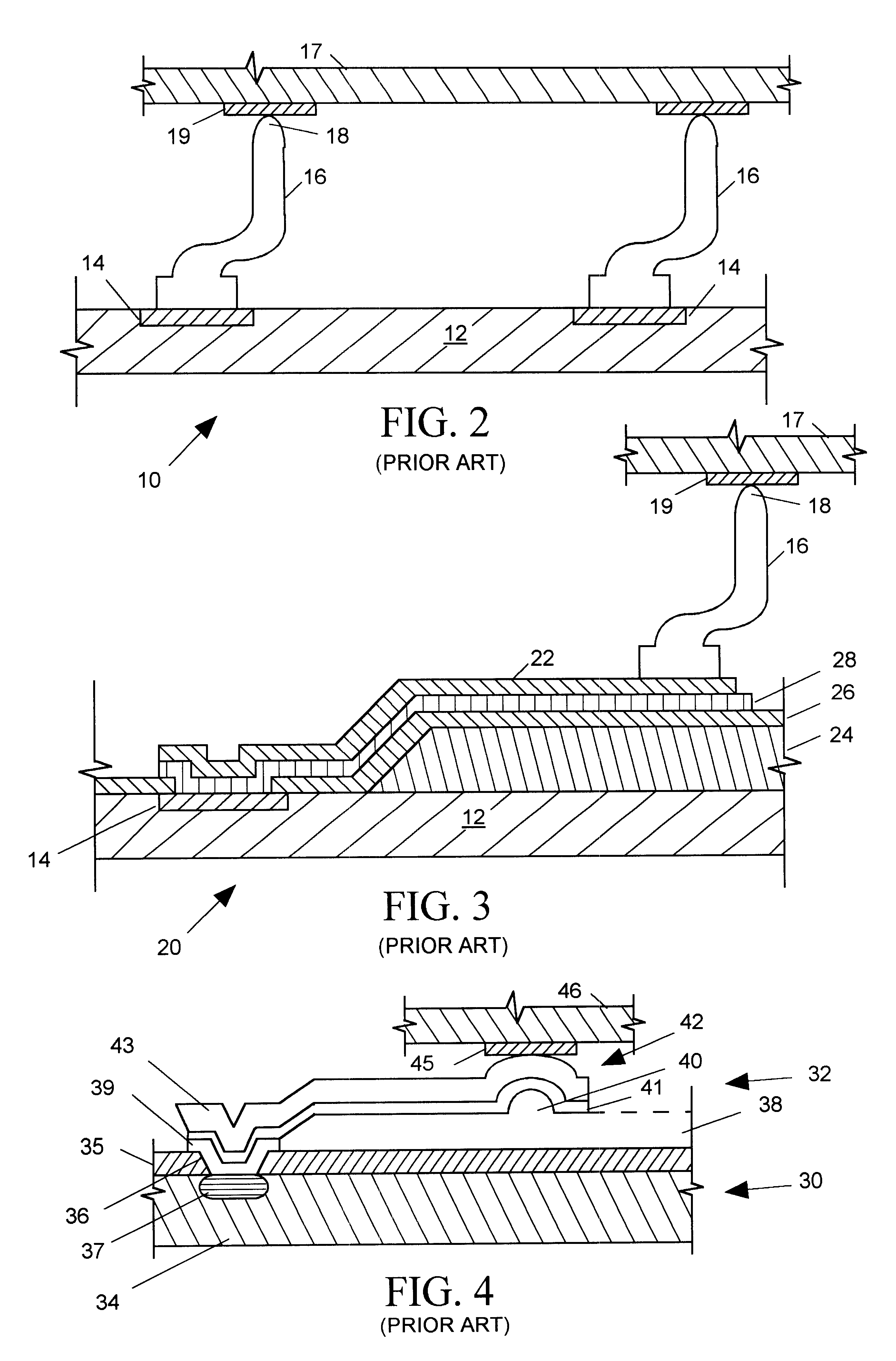Method of designing, fabricating, testing and interconnecting an IC to external circuit nodes
a technology of external circuit node and design, applied in the direction of instruments, program control, waveguide type devices, etc., can solve the problems of inability to verify the timing of the circuit, the interconnect system can severely attenuate and distort the signals passing between the ic and external circuit, and the timing verification at this stage of the design may not be entirely accurate, so as to facilitate the optimization of the testing and operating environmen
- Summary
- Abstract
- Description
- Claims
- Application Information
AI Technical Summary
Benefits of technology
Problems solved by technology
Method used
Image
Examples
Embodiment Construction
IC Design Using Component Cell Libraries
An integrated circuit (IC) design engineer initially generates a high-level behavioral model of a circuit using a hardware description language (HDL). For a digital IC employing synchronous logic, this model typically describes how the circuit logically processes data flowing between clocked registers. The HDL circuit model is purely logical and does not take into account timing or other limitations of the IC technology that is to implement the IC. However conventional computer-based design (CAD) synthesis tools enable the design engineer to convert the HDL model of the circuit into a lower-level behavioral model (e.g. a "netlist") depicting the circuit as a set of interconnected circuit components or "cells" that may be implemented using a particular IC technology. While the netlist model describes each cell in terms of its behavior rather than its structure, the behavioral model of each cell is based on the known performance of a circuit com...
PUM
 Login to View More
Login to View More Abstract
Description
Claims
Application Information
 Login to View More
Login to View More - R&D
- Intellectual Property
- Life Sciences
- Materials
- Tech Scout
- Unparalleled Data Quality
- Higher Quality Content
- 60% Fewer Hallucinations
Browse by: Latest US Patents, China's latest patents, Technical Efficacy Thesaurus, Application Domain, Technology Topic, Popular Technical Reports.
© 2025 PatSnap. All rights reserved.Legal|Privacy policy|Modern Slavery Act Transparency Statement|Sitemap|About US| Contact US: help@patsnap.com



